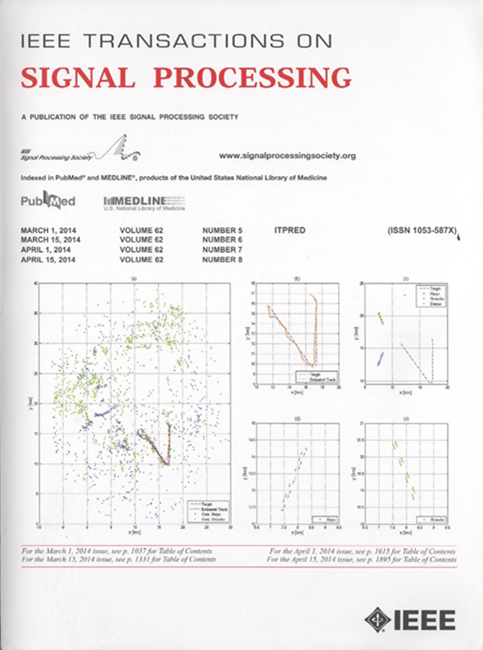A Method to Obtain Non-Power-of-Two FFT Flow Graphs Based on a New Prime Factor Algorithm
IF 4.6
2区 工程技术
Q1 ENGINEERING, ELECTRICAL & ELECTRONIC
引用次数: 0
Abstract
This paper presents a novel method to obtain non-power-of-two (NP2) fast Fourier transform (FFT) flow graphs based on a new prime factor algorithm (PFA). The FFT flow graph is crucial for designing FFT architectures but previous works only provide systematic approaches to build flow graphs for power-of-two sizes (P2). Thus, the derivation of NP2 flow graphs is an important step towards the design of efficient NP2 FFT architectures. The proposed approach consists of two independent parts. On the one hand, it obtains all the possible index mappings that lead to a flow graph with no rotations between butterflies. On the other hand, it determines the permutations between butterflies in the flow graph. By combining these two parts, the order of the inputs and outputs is derived. As a result, the entire flow graph is obtained systematically. Additionally, the proposed approach generates all the possible flow graphs for a given factorization of the FFT size. The reduction in operations for NP2 FFTs using the proposed approach leads to a significant reduction in area and power consumption concerning P2 FFTs with similar sizes after implementing the proposed flow graphs directly in hardware. Particularly, there is a significant improvement between the proposed 30-point and 60-point FFT and previous efficient P2 FFTs. This remarkable fact sets NP2 at the forefront of FFT research after being in second place behind P2 FFTs for decades.基于一种新的素数因子算法的非二次幂FFT流图获取方法
提出了一种基于素数因子算法(PFA)的非2次幂(NP2)快速傅里叶变换(FFT)流图的新方法。FFT流程图对于设计FFT架构至关重要,但以前的工作只提供了构建2次幂大小的流程图的系统方法(P2)。因此,NP2流图的推导是设计高效的NP2 FFT体系结构的重要一步。该方法由两个独立的部分组成。一方面,它获得所有可能的索引映射,这些索引映射导致蝴蝶之间没有旋转的流图。另一方面,它决定了流图中蝴蝶之间的排列。通过结合这两部分,可以推导出输入和输出的顺序。从而系统地得到了整个流图。此外,所提出的方法为给定FFT大小的分解生成所有可能的流图。在直接在硬件中实现所建议的流程图后,使用所建议的方法减少NP2 fft的操作,导致具有类似尺寸的P2 fft的面积和功耗显着减少。特别是,在提议的30点和60点FFT与以前高效的P2 FFT之间有显着改进。这一显著的事实使NP2成为FFT研究的前沿,而几十年来,NP2一直落后于P2 FFT。
本文章由计算机程序翻译,如有差异,请以英文原文为准。
求助全文
约1分钟内获得全文
求助全文
来源期刊

IEEE Transactions on Signal Processing
工程技术-工程:电子与电气
CiteScore
11.20
自引率
9.30%
发文量
310
审稿时长
3.0 months
期刊介绍:
The IEEE Transactions on Signal Processing covers novel theory, algorithms, performance analyses and applications of techniques for the processing, understanding, learning, retrieval, mining, and extraction of information from signals. The term “signal” includes, among others, audio, video, speech, image, communication, geophysical, sonar, radar, medical and musical signals. Examples of topics of interest include, but are not limited to, information processing and the theory and application of filtering, coding, transmitting, estimating, detecting, analyzing, recognizing, synthesizing, recording, and reproducing signals.
 求助内容:
求助内容: 应助结果提醒方式:
应助结果提醒方式:


